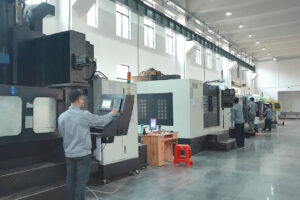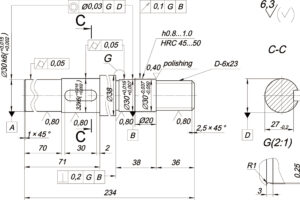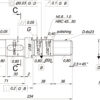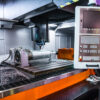When you’ve finished your design, it’s time to find the proper process for your part needs, which helps save costs and deliver efficiently. So with all kinds of methods, what kind of process is your part suitable for? We have made a simple table; you can choose the craft according to the situation.
Part Quantity and Process Recommendation Comparison Table
Number of parts | 1 | 10 | 100 | 1000or more |
Plastic | 3D Printing | 3D Printing | CNC Machining | Injection Molding |
Metal | 3D printing or CNC machining | CNC Machining | CNC Machining | Metal die casting |
The following situations are suitable for CNC machining:
CNC machining is a common subtractive manufacturing technique with excellent repeatability, high precision, and a wide range of material and surface finishes for small one-off jobs and medium to high volume production.
In our experience, we recommend CNC machining for all parts that can be manufactured with little effort by the subtractive process. CNC provides greater dimensional accuracy and produces parts with better mechanical properties, but this often comes with higher costs, especially in smaller volumes.
The following situations are suitable for using 3D printing:
- The 3D printing process builds a part by adding material one layer at a time, which is typical of additive manufacturing. The process does not require special tools or fixtures, so initial setup costs are kept to a minimum.
- Traditional methods cannot produce parts, such as highly complex topology-optimized geometries.
- 3D printed parts can be delivered in as fast as 24 hours when delivery is urgent.
- 3D printing is usually cheaper than CNC for small batches when cost control is required.
- 3D printing is more advantageous when a small number of identical parts are required (e.g., less than 10).
- Materials that are required cannot be easily machined, such as metallic superalloys or flexible TPU.
Injection molding is suitable for the following situations:
Injection molding has strong adaptability to plastic varieties and can form plastic parts with complex shapes, precise dimensions, and metal or non-metal inserts simultaneously.
- When the number of parts is more than 1000.
- The material of the part is plastic or rubber.
- The lead time is generous, and the injection molding process usually takes one month.
- When you need to control costs, injection molding is very cost-effective in high-volume manufacturing.
Metal die casting is suitable for the following situations:
Metal castings processed by die casting include zinc, aluminum, magnesium, copper, etc. There are two main types of machines used for processing, cold chamber machine and hot chamber die casting machine.
- When the number of parts is more than 1000.
- The material of the parts is metal, such as zinc, aluminum, magnesium, copper, etc.
- The delivery time is ample. After the die-casting parts are produced, precise CNC machining is required, and the machining cycle is long.
- When it is necessary to control costs, metal die casting is very cost-effective in mass production.
If you are still confused about choosing a process, please get in touch with our engineer experts, submit a free project review, and you will receive our professional process selection advice within 12 hours.







